Hot water is a luxury that RVers should never take for granted. From showering to truly cleaning your dishes, it’s essential to your overall RV hygiene. When considering an upgrade to a tankless RV water heater, you must know the advantages and disadvantages of this water heater type.
What is a Tankless Water Heater (and How Does it Work?)
Traditional water heaters boast a storage tank that fills with water from your fresh water tank or when you’re connected to city water. That water is then heated using a propane burner or an electric heating element, which can sometimes take as long as 30 minutes before you can enjoy a hot shower. Tankless water heaters work a little differently.
Tankless RV water heaters, also known as on-demand water heaters, heat your water instantaneously, eliminating the need for a storage tank. When you open a hot water fixture in your kitchen sink or RV shower, cold water runs through a heat exchanger powered by propane gas. This design allows them to deliver constant hot water without you waiting for water to be heated in a tank.
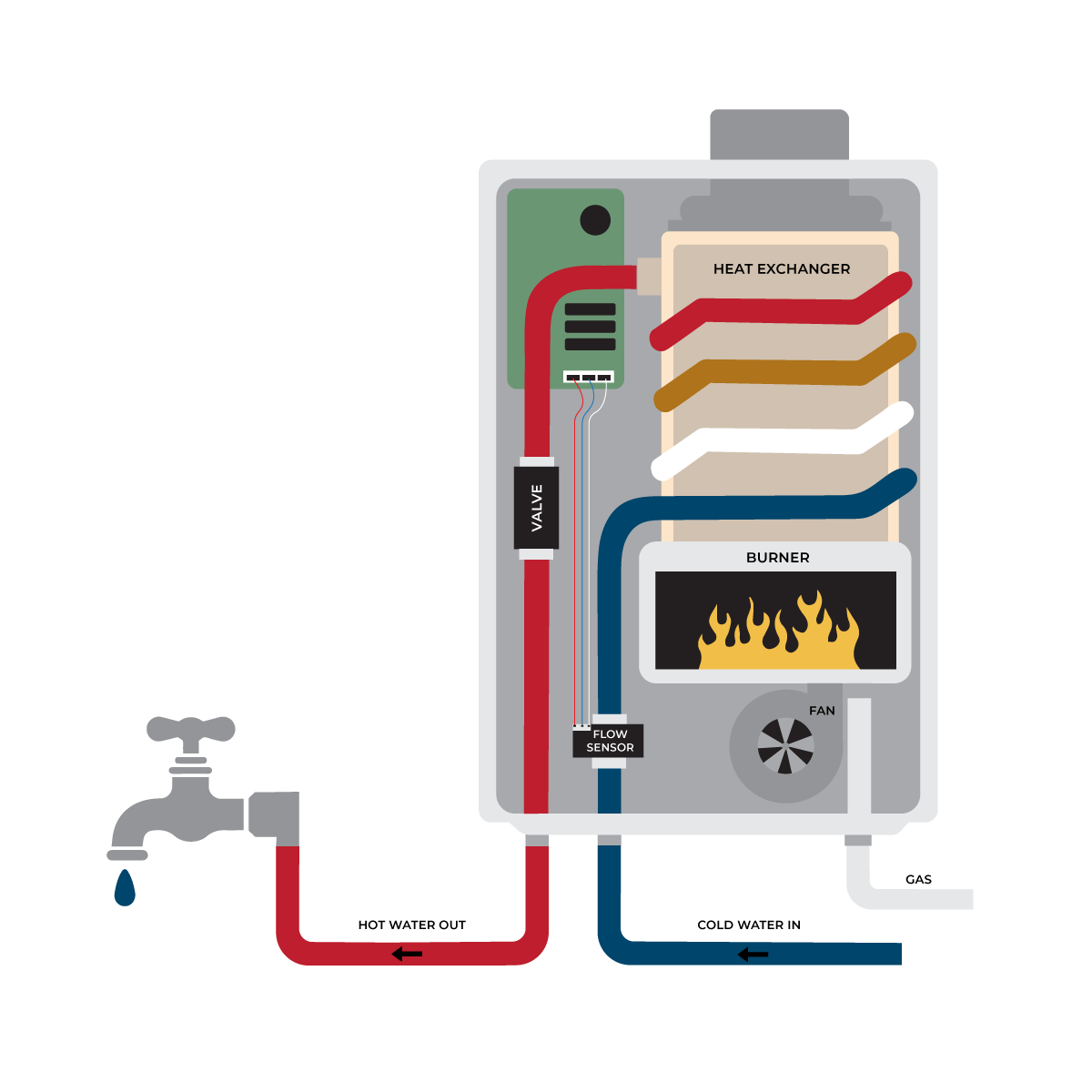
Photo by Camping World
Benefits of Tankless RV Water Heaters
Here are a few of the advantages of tankless RV water heaters:
- Increased energy efficiency because there’s no heat loss from standing water.
- Reduced risk of spillage and decreased potential for RV water damage.
- No waiting for your water heater’s tank to heat up.
- Longer life expectancy than standard water heaters.
Disadvantages of Tankless RV Water Heaters
While they’re a great option for some, some RVers still swear by their standard water heater because tankless RV hot water heaters can:
- Waste a lot of water before hot water is dispensed.
- Only operate on propane gas.
- Require complex retrofitting if you don’t do your research to find a compatible model.
Many newer models have worked out the original kinks related to water consumption and energy usage, but it’s worth knowing about these potential downsides when deciding if a tankless hot water heater is right for you.
How to Choose a Tankless RV Water Heater
Before you get overly enamored with the idea of hot water on demand, there are a few key things you’ll want to consider:
Water Usage
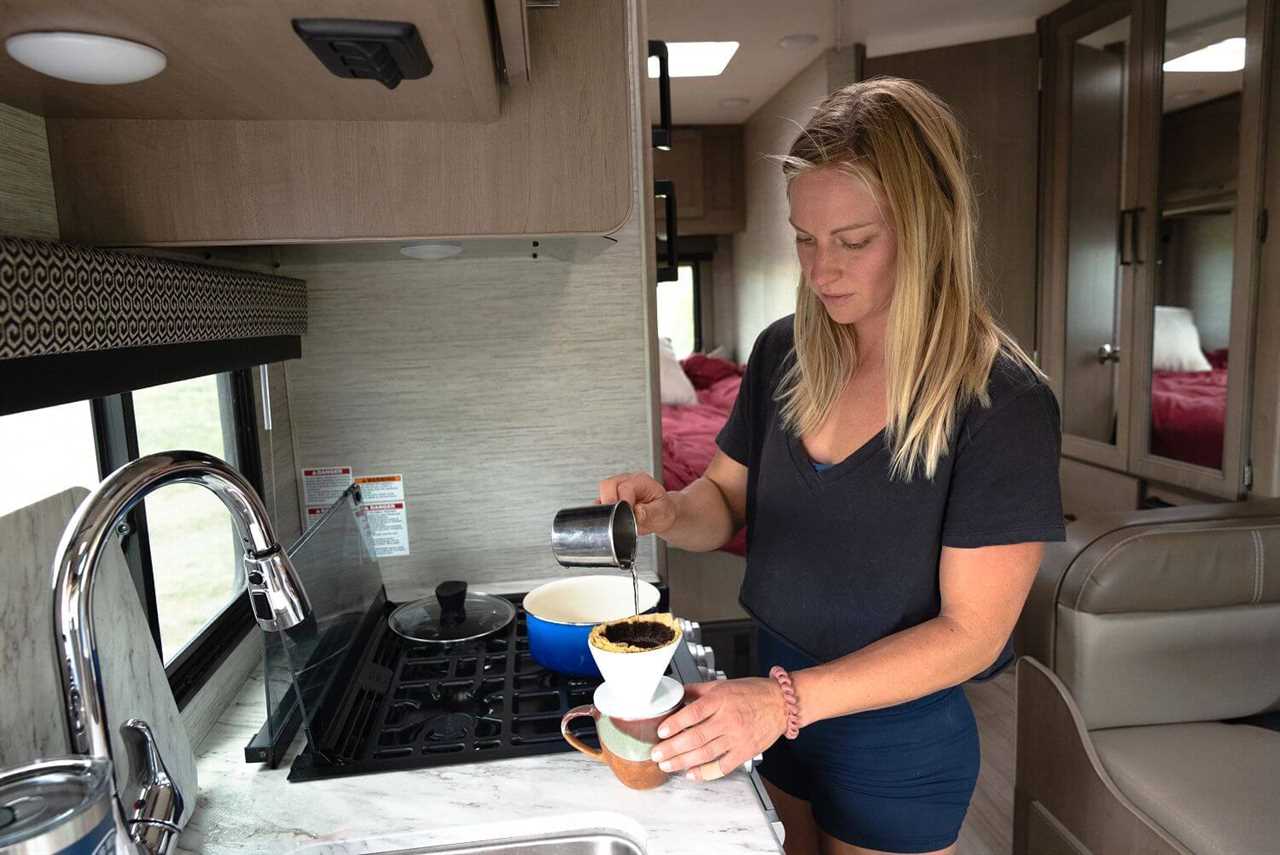
Photo by Camping World
You’ll want a ballpark figure of your water usage before you begin shopping for a tankless water heater. Here is a quick reference for the average water consumption of RV appliances:
- Toilet: ~0.8 gallons per flush
- Bathtub: ~2-4 gallons per minute
- Shower: ~1.5-3 gallons per minute
- Kitchen Sink: ~0.5 gallons per minute
- Dishwasher: ~4-6 gallons per cycle
- Washer: ~8-20 gallons per load
When choosing a regular water heater, you’d consider how often you might use these appliances in one day. With a tankless water heater, the more important question is how often you think you might use multiple appliances simultaneously.
Tankless RV water heaters can provide an on-demand water heating capacity from 1.5 to 6 gallons per minute, depending on the model. Compare and contrast models to meet your water usage demands.
Installation

Photo by Camping World
While one of the benefits of a tankless water heater is that it requires less storage space, you still need to ensure compatibility with your RV. Some models are meant to be retrofitted in the same space that housed your old water heater.
This is the simplest solution, and the Suburban Nautilus On-Demand Water Heater is a good example of a tankless water heater designed to replace standard Suburban water heaters. Retrofit kits are available from most manufacturers to help with a safe, aesthetically-pleasing installation.
Because you’ll need to safely disconnect propane and shut off your RV’s electricity to install a tankless water heater, you may want to schedule a service appointment for this RV upgrade.
Service technicians will ensure proper installation location and adherence to all codes and regulations regarding proper water heater ventilation. If you occasionally RV in locations that drop below 32℉, ask your RV performance specialist about installing an antifreeze kit with your new tankless water heater.
Winterizing
Speaking of freezing temperatures, you should know that winterizing your RV will change if you upgrade from a standard water heater to a tankless model. A basic winterizing process uses air to blow out water lines, but there will always be a small amount of water left behind.
That water will destroy a tankless water heater if temperatures drop below 32℉. If you have a tankless water heater or hydronic heating system and bring your RV to a Camping World Service Center to be winterized, you should receive the Deluxe Winterize package.
That package requires technicians to pump RV antifreeze through your entire freshwater system to displace water and protect your unit from freeze damage. It’s a more costly service, but it helps you avoid even larger repair costs if you winterize your RV improperly.
Additionally, the bypass valves on your standard water heater should be removed when retrofitting your RV with a tankless model. These valves serve no purpose for a tankless design and can sometimes lead to confusion if you’re winterizing your RV at home.
Electric or Gas? Is There Even a Choice?
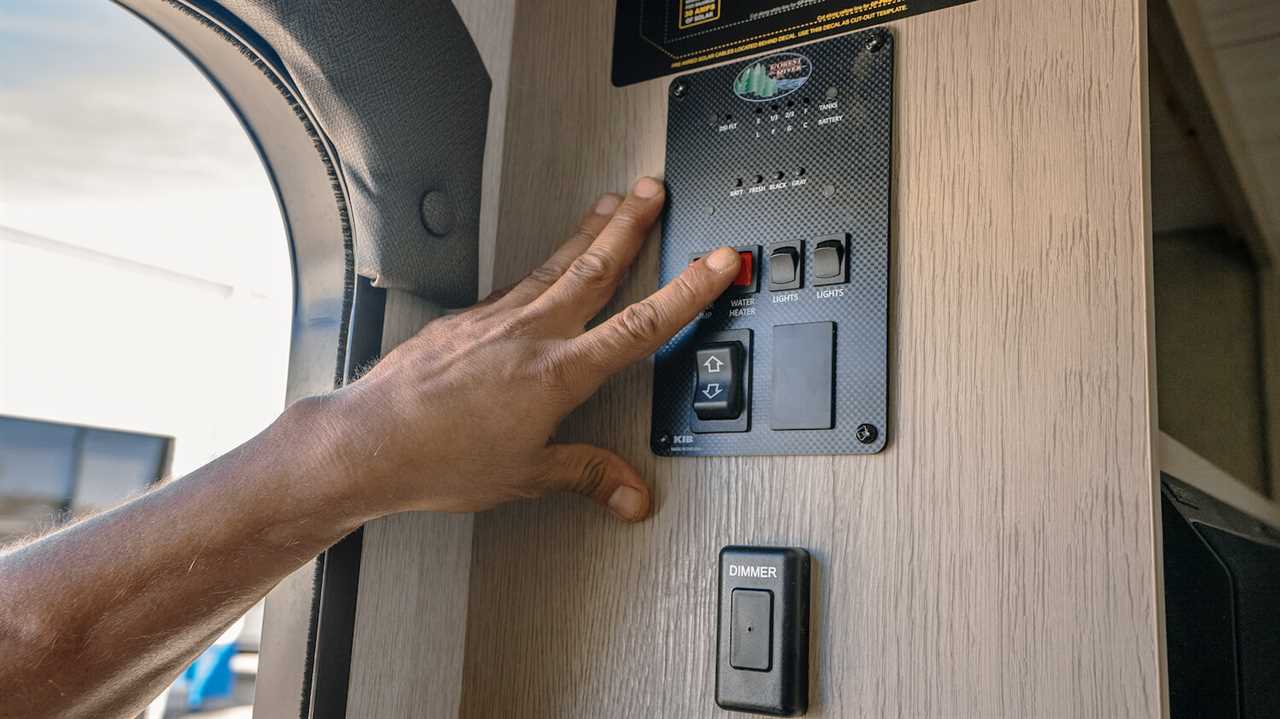
Photo by Camping World
Standard water heaters can be set to use LP gas or an electric heating element to heat your water. These models utilize a 1,400-watt electric heating element that produces around 6,000 BTUs per hour (BTUs are British Thermal Units).
To deliver comparable performance, a tankless water heater powered by electricity would require a minimum of 40,000 BTUs/hr, which equates to roughly 75 amps of 120 VAC power. That’s much more than the 30 or 50 amps most RVs are wired for.
A tankless water heater will restrict you to utilizing only propane to heat water, whether boondocking or plugged into a power pedestal in an RV park.
Some hydronic heating systems with the capability to furnish your RV with hot water (not all can) offer an electric option. As currently designed, an electric tankless water heater would require 220 volts of AC power, which is not available in RVs.
Gas-powered tankless water heaters equipped with a small battery bank are your best option. That battery bank provides the ignition source when you aren’t plugged into 120 VAC power. Many RVers also find propane-powered versions easy to install and don’t mind replacing or refilling RV propane containers regularly.
There are portable standalone tankless water heaters that operate on 120 VAC power. Still, these models typically only deliver a water temperature up to about 95℉ and offer a low water flow rate of 0.5 gallons per minute, which wouldn’t be effective for much in an RV.
Design
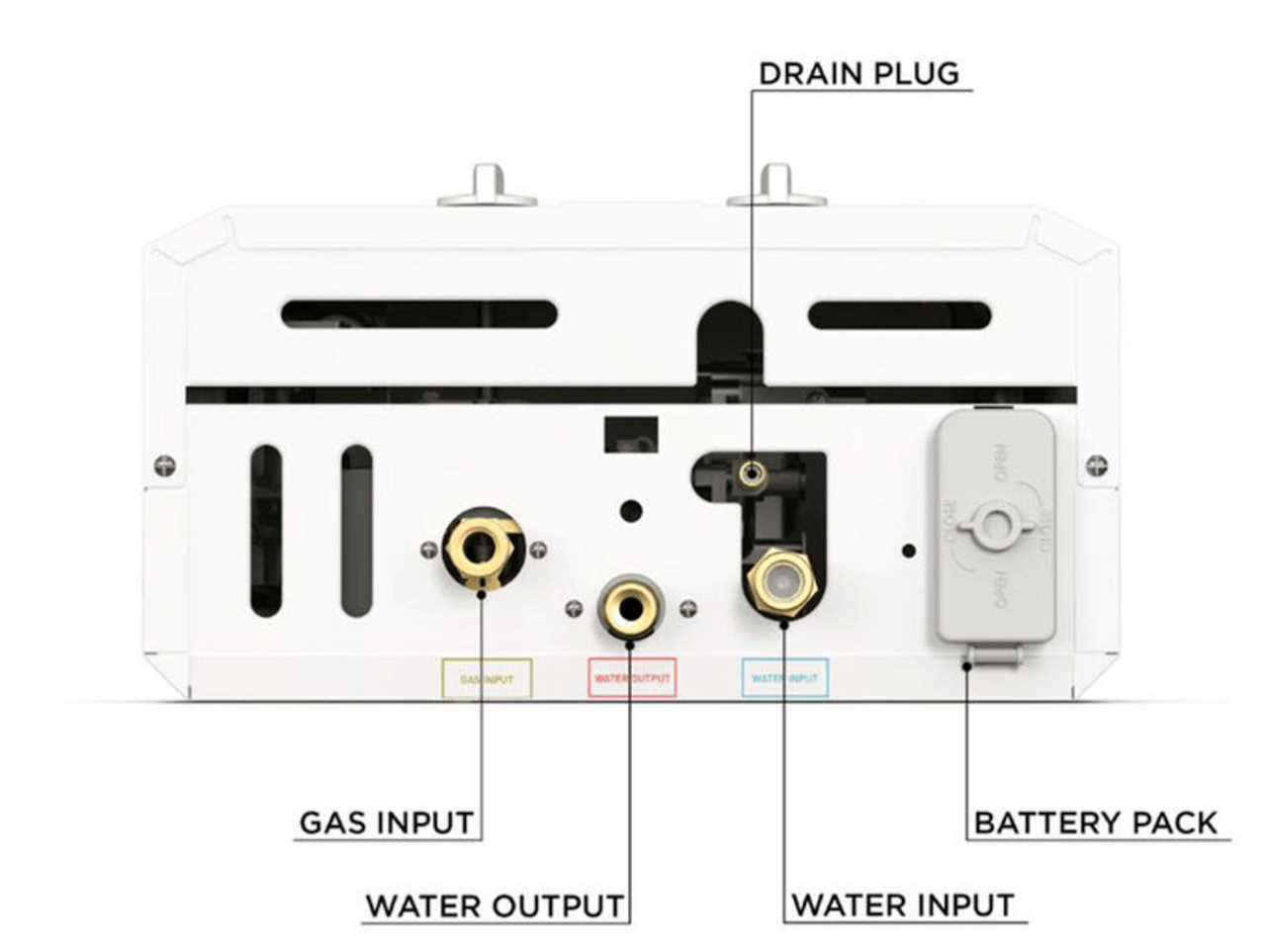
Photo by Camping World
Tankless water heaters are generally simpler to maintain than water heaters that rely on a pilot light or direct spark ignition (DSI). When purchasing a tankless water heater, choose one with a display you can operate.
If you need hot water for your RV shower, there are plenty of compact designs to choose from. For those with camper vans, there are also portable tankless water heaters you can temporarily set up for luxurious outdoor showers on a warm summer afternoon.
Cost

Photo by Camping World
It’s also important to consider your financial situation. Some portable tankless water heaters are less expensive than their traditional counterparts, but you may spend more to replace an old water heater than you’d spend to repair it.
If you’re set on upgrading, you’ll need to factor in the potential long-term savings of a tankless water heater. These more energy-efficient units can reduce your overall energy costs compared to replacing your old unit with a standard DSI water heater.
If your standard RV water heater isn’t functioning, start by learning more about troubleshooting water heaters or schedule an appointment to have your water heater issues diagnosed by a certified RV technician.
Tankless Water Heaters from Camping World
For those that have committed to going tankless, here are a few options:
Excel Vent-Free Tankless Propane Water Heater
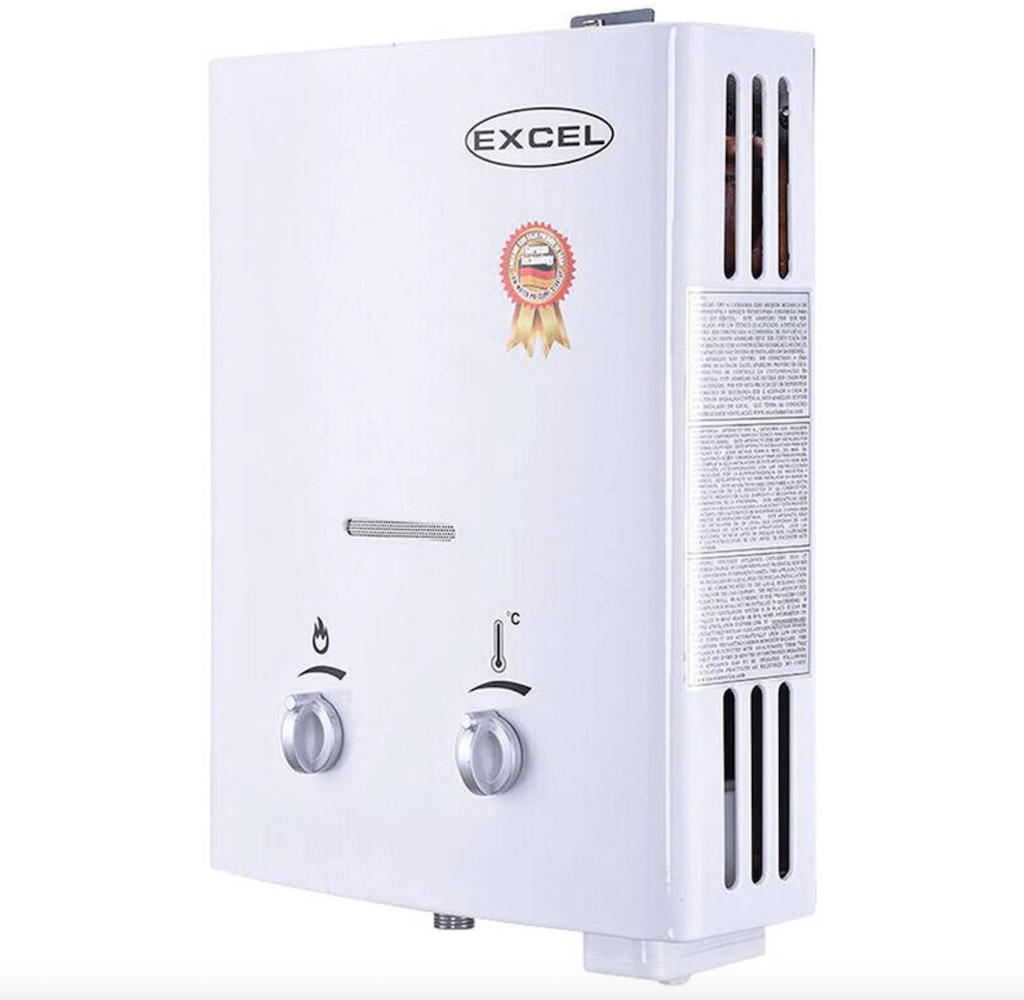
Photo by Camping World
Designed for indoor or outdoor use, this unit’s Oxygen Depletion Safety (ODS) shut-off feature is what allows its vent-free operation. It doesn’t require a standing pilot light, reducing propane consumption by as much as 25% compared to older units.
Instead of a pilot light, it utilizes two D-cell batteries to ignite the unit’s electronic spark module. The copper heat exchanger provides fast and efficient heat transfer, and it’s equipped with a magnetic flow sensor that allows it to start up at water pressures as low as two PSI.
Find the full list of specs and features for this tankless water heater.
Eccotemp L5 Portable Tankless Water Heater
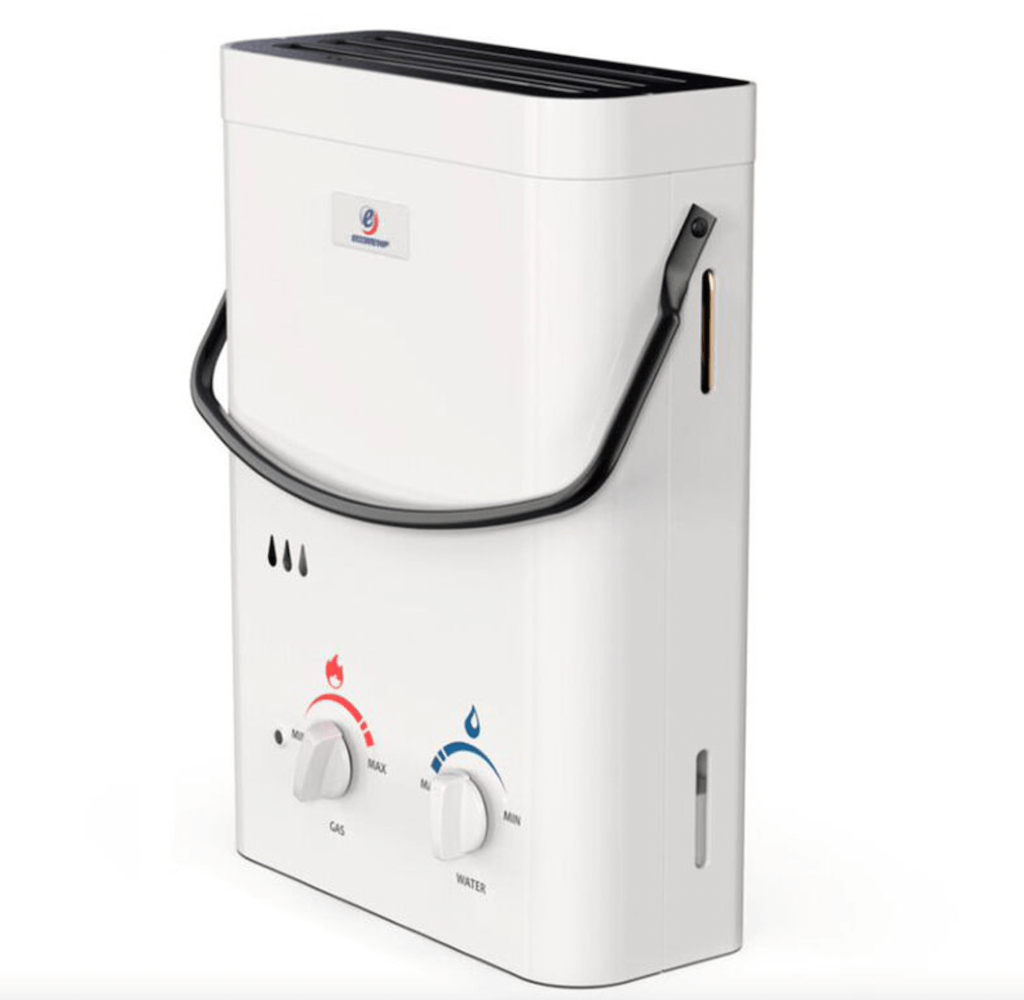
Photo by Camping World
Ideal for class B RVs or pop-up campers, the Eccotemp L5 is designed for outdoor use. You can adjust the temperature output from 80 to 120℉, and the unit easily connects to a garden hose or a standard RV water hose.
Like the Excel model, it uses two D-cell batteries to power the ignitor and runs off a 20-pound RV propane container. As tested, this unit is best used at or below 2,000 feet of elevation and is not recommended for use above 5,000 feet.
Learn more about this tankless water heater.
Marey Tankless LP Gas Water Heater
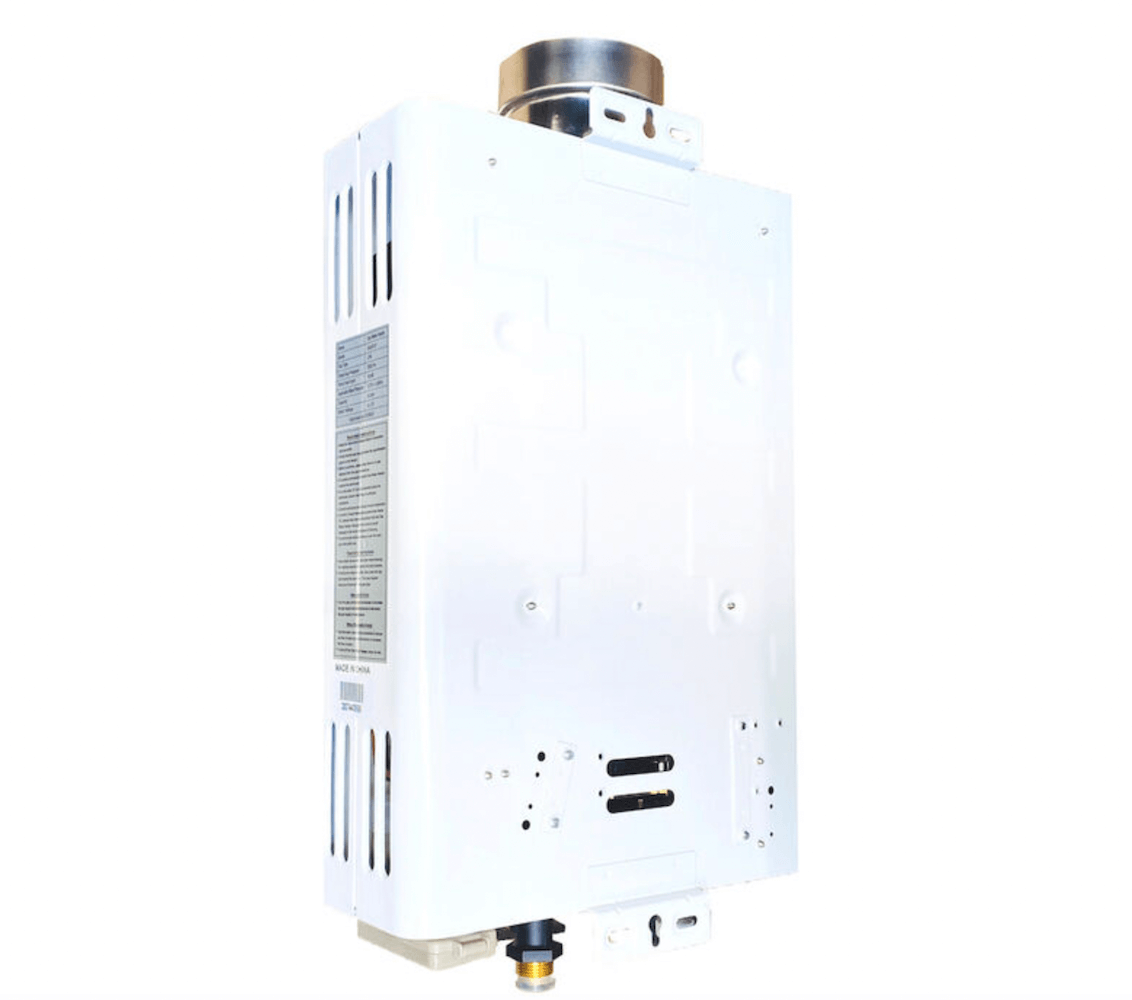
Photo by Camping World
Marey makes another great option for a tankless water heater for RV use. It produces up to 2.6 gallons of hot water per minute and is rated to handle a heat input of up to 68,240 BTUs per hour.
It’s designed for indoor use and provides winter-to-summer versatility with adjustable temperature control. It can also install almost anywhere in your RV, and it doesn’t require an electrical connection to deliver on-demand hot water.
Check out the specs and features of this tankless water heater.
So whether you’re hoping to avoid family fights over who gets to shower when or you just want to be more energy efficient in your RV travels, a tankless water heater is the future of instantaneous hot water for RVers.
For direct assistance with RV upgrades or remodels, speak to a design specialist at a Camping World Design Center near you.
Do you have a tankless water heater for your RV? Share your experience in the comments below!
By: Tucker Ballister
Title: What to Look For In a Tankless RV Water Heater
Sourced From: blog.campingworld.com/rv-basics/what-to-look-for-in-a-tankless-water-heater/
Published Date: Thu, 03 Nov 2022 14:00:42 +0000
---------------------------------------------
Did you miss our previous article...
https://outdoorsnewswire.com/camping/camping-5-teardrop-camper-luxuries-when-travelling-in-the-outback
 CampingSurvivalistHuntingFishingExploringHikingPrivacy PolicyTerms And Conditions
CampingSurvivalistHuntingFishingExploringHikingPrivacy PolicyTerms And Conditions
